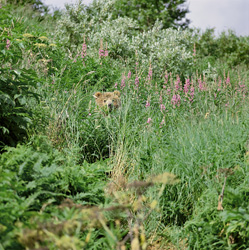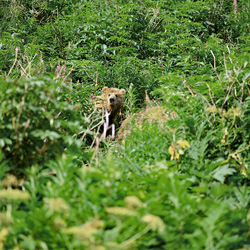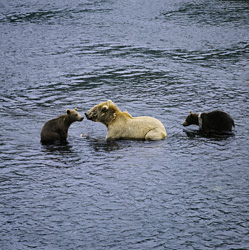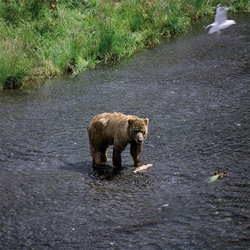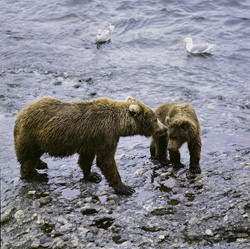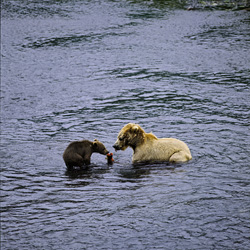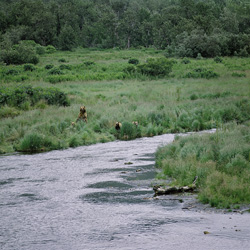Explore the majestic Kodiak Bears in their natural Alaskan habitat – stunning insights into the lives of these powerful animals.
Kodiak Bears, scientifically known as Ursus arctos middendorffi, are an impressive subspecies of the brown bear and the largest land predators in the world after polar bears. These majestic animals inhabit the remote and picturesque Kodiak Island in Alaska, where the rich ecosystem with its numerous salmon runs and dense forests provides ideal living conditions. Kodiak Bears are renowned for their immense size and strength, with mature males weighing up to 800 kg. They are excellent swimmers and climbers, allowing them to navigate various terrains. Their diet is diverse, including fish, particularly salmon, berries, prey, and plant material. During salmon runs, the bears spend significant time in the water to feed on the nutrient-rich salmon heads. In the quieter months, they expand their diet to various plant species to maintain their energy. The behaviors of Kodiak Bears are fascinating to observe, as they exhibit complex social interactions and territorial behaviors. Conservation efforts and protection projects are crucial to preserve these magnificent animals and their habitats. With their presence, Kodiak Bears significantly contribute to Alaska's biodiversity and are a symbol of the region's pristine wilderness. Photographs of Kodiak Bears provide unique insights into their lives and environments, making them a valuable addition to any nature and wildlife image collection.

